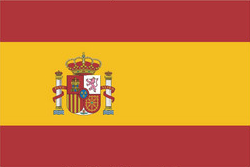GMV is responsible for drawing up the Land Use/Land Cover (LULC) and habitat maps that will serve as the primary baseline ecological dataset underpinning the Emirate’s environmental conservation activities over the next decade
The idea of land-use maps is to give a better idea of the land, contributing towards its intelligent management and serving as a basic tool in taking political, environmental or engineering decisions
Abu Dhabi is the largest of seven Emirates comprising the United Arab Emirates (UAE), occupying more than 80% of the country’s total land area
GMV, an aerospace firm, has announced the winning of a cartographic-production contract from the Emirate of Abu Dhabi. As part of an international consortium, GMV has just won a contract from the Abu Dhabi Environmental Agency for drawing up fine-scale terrestrial and marine Land Use/Land Cover (LULC) and habitat maps for the whole Emirate of Abu Dhabi. Abu Dhabi is the largest of seven Emirates comprising the United Arab Emirates (UAE), occupying more than 80% of the country’s total land area.

Within the project, primed by Proteus, GMV is leading the terrestrial part, including the development of the LULC and habitat maps that will serve as the primary baseline ecological dataset supporting EAD’s environmental conservation activities over the next decade.
The whole project takes in a land area of 60,000 Km2 plus 20,000 Km2 of coastline down to a depth of 15 m. GMV will deliver maps with a thematic accuracy greater than 85%, with a variable mapping unit (1 to 25 hectares) and up to 34 classes in the habitat map, 35 in the land cover map and 13 in the land use map. The idea of land-use maps is to give a better idea of the land, contributing towards its intelligent management, increasing its level of exploitation and serving as a basic tool in taking political, environmental or engineering decisions.
As a preliminary task GMV will be responsible for the orthorectification and atmospheric correction of all images, ensuring terrain correction for sensor- and platform-induced distortions and also atmospheric distortions. This means that the rest of the consortium team can work from uniform, high-precision orthorectified images.
GMV has been working very actively in the earth-observation applications market, adding value to satellite images, as in the services it is developing for precision agriculture and environmental activities.
In the Earth Observation area GMV is also currently participating in important Copernicus projects (formerly called GMES- Global Monitoring for Environment and Security) in the areas of the environment, emergency management and security. Some of the most important projects are the following: Forest Monitoring (GSE-FM), which focuses on the application of EO for forestry management; RECOVER, developing forest monitoring services to support the United Nation’s REDD+ program for fighting against deforestation and forest degradation in the tropical region; or the GMV-led FireSmart project, working towards the prevention of forest fires by means of sustainable forestry management practices.







